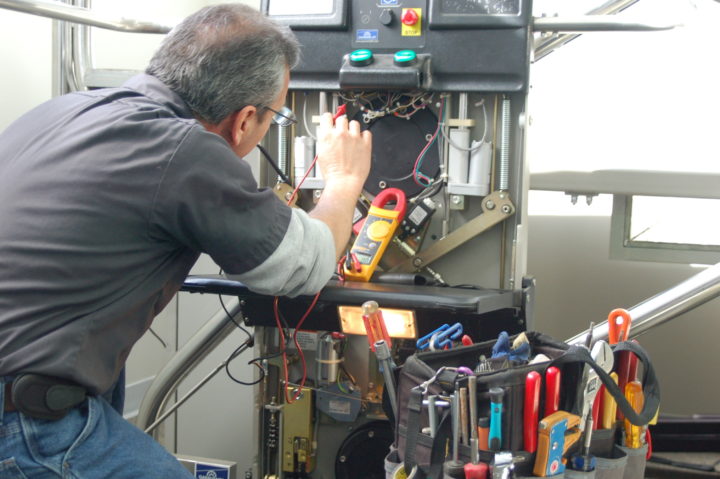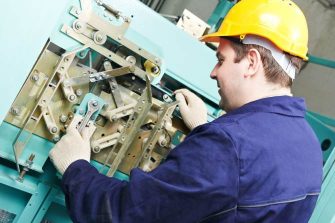Comprehensive Guide to Lift Solutions and Their Upkeep
Browsing the complex world of lift systems and their upkeep is a task that demands accuracy and understanding. From the various kinds of elevator systems being used to the careful adherence to security regulations, the maintenance of these upright transportation tools is a diverse endeavor. As structures skyrocket higher and innovation advancements, the demand for a comprehensive understanding of elevator systems ends up being significantly important. Join us as we decipher the intricacies of elevator upkeep, discovering common concerns, finest practices, and sophisticated technologies that form the modern landscape of upright transportation.
Kinds Of Elevator Solutions
Lift systems been available in various types, each created to match particular building needs and user needs. One of the most usual types consist of hydraulic lifts, grip elevators, machine-room-less elevators, and vacuum cleaner lifts. Hydraulic lifts are optimal for low-rise buildings and use a hydraulic piston to move the lift auto. Traction elevators, on the other hand, are a lot more matched for skyscraper buildings and use steel ropes and weights to relocate the cars and truck. Machine-room-less lifts are a space-saving option as they do not require a separate device space for the lift equipment. Vacuum cleaner lifts, an extra modern development, use air pressure differentials to move the cars and truck within a clear tube.
Each kind of lift system has its very own benefits and negative aspects, making it crucial for structure proprietors and designers to carefully consider their specific needs prior to picking one of the most ideal choice. Elements such as building height, room schedule, power effectiveness, and budget restraints all play a substantial duty in figuring out the finest elevator system for a particular structure.
Typical Maintenance Concerns
Normal upkeep of elevator systems is essential to guarantee smooth operation and prolong their lifespan. Despite regular maintenance, lift systems can still run into usual upkeep issues that require to be immediately dealt with to stop interruptions in service. Regular inspections and aggressive upkeep can assist determine and solve these typical maintenance issues prior to they intensify and affect the general efficiency of the lift system.
Security Regulations and Conformity
Sticking to rigid security policies and ensuring conformity with market standards are extremely important for keeping the operational integrity of lift systems. Elevators go through an extensive set of safety and security guidelines to safeguard guests, maintenance personnel, and the basic public. Regulatory bodies such as the Occupational Safety and Wellness Administration (OSHA) in the USA and the European Lift Organization (ELA) in Europe establish standards that cover various facets of elevator layout, installment, maintenance, and procedure.
Compliance with these regulations is not only a legal demand yet also an ethical commitment for structure proprietors and lift upkeep firms. content Normal inspections, maintenance checks, and adherence to safety and security protocols outlined in the policies are necessary to make certain the efficient and safe operation of elevator systems.
Ideal Practices for Maintenance

Structure owners need to likewise consider spending in modernization upgrades to improve the efficiency and safety and security of their elevator systems. By adhering to these finest practices, lift systems can operate smoothly and securely, supplying dependable upright transportation for owners.

Advanced Technologies for Efficiency
Applying innovative innovations in elevator systems can considerably enhance functional effectiveness and passenger experience. These systems permit passengers to input their desired flooring before getting in the elevator, which after that guides them to the most reliable cars and truck.
Furthermore, the Full Report assimilation of wise sensing units and anticipating upkeep capacities has reinvented lift upkeep. These sensing units can find prospective issues prior to they escalate, making it possible for proactive upkeep interventions and lessening downtime. Additionally, making use of energy-efficient elements and regenerative drives helps minimize power consumption and operating expense in lift systems.
Additionally, the execution of cloud-based monitoring and remote diagnostics permits real-time monitoring of elevator efficiency and instant troubleshooting of any kind of malfunctions. This positive strategy not only enhances system integrity but likewise boosts the overall user experience by making certain undisturbed and smooth lift operations.
Verdict
In conclusion, comprehending the various kinds of lift systems, usual maintenance issues, security guidelines, ideal maintenance practices, and advanced innovations for performance is important for making sure the smooth procedure of elevators. By adhering to safety policies and executing finest methods for maintenance, structure proprietors can lengthen the life-span of their lift systems and make certain the safety of passengers. It is very important to stay updated on the current developments in elevator technology to improve efficiency and integrity.
The most usual kinds consist of hydraulic elevators, grip lifts, machine-room-less lifts, and vacuum cleaner lifts. Hydraulic elevators are optimal for low-rise buildings and use a hydraulic piston to relocate the lift click for more info cars and truck. Machine-room-less lifts are a space-saving choice as they do not need a different device room for the elevator equipment. Routine assessments and positive maintenance can aid recognize and solve these typical maintenance concerns before they escalate and impact the total performance of the lift system.

 Michael J. Fox Then & Now!
Michael J. Fox Then & Now! Mackenzie Rosman Then & Now!
Mackenzie Rosman Then & Now! Kelly Le Brock Then & Now!
Kelly Le Brock Then & Now! Lisa Whelchel Then & Now!
Lisa Whelchel Then & Now! Mike Smith Then & Now!
Mike Smith Then & Now!